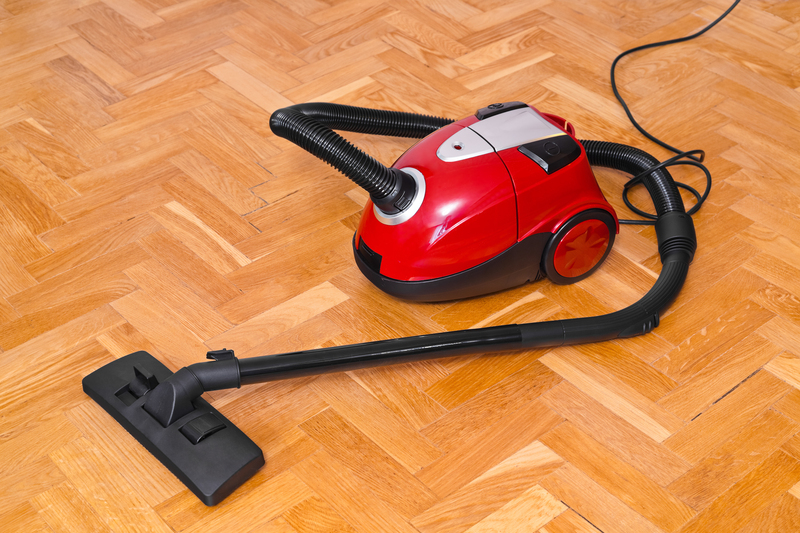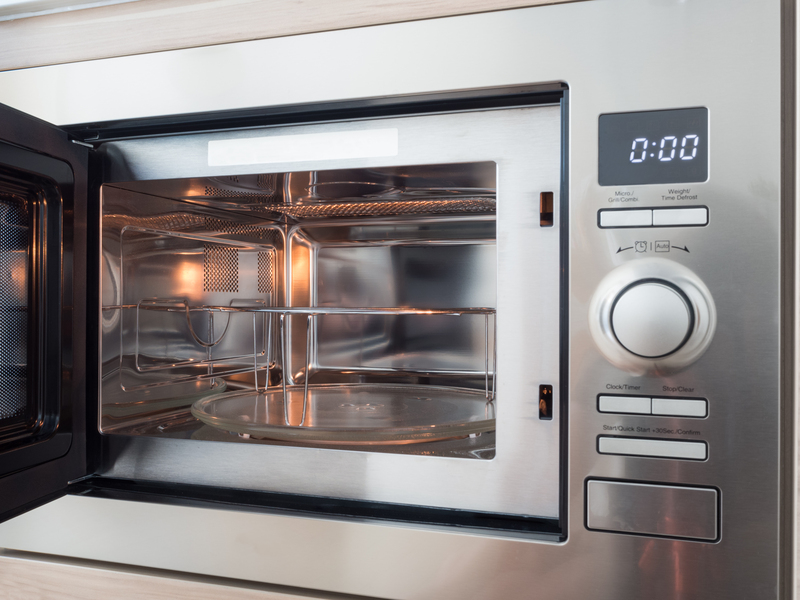Expert Advice on Creating a Mold-Free Bathroom
Posted on 05/06/2025
Expert Advice on Creating a Mold-Free Bathroom
Bathrooms are inherently damp environments, making them susceptible to one of the most common household problems: mold growth. Not only is mold unsightly, but it can also pose serious health risks, especially for those with allergies or weakened immune systems. Fortunately, with the right strategies and regular maintenance, you can effectively create and maintain a mold-free bathroom. In this comprehensive guide, we'll explore expert tips for bathroom design, daily habits, and cleaning techniques to banish mold for good.

Understanding Mold and Its Dangers
What is Bathroom Mold?
Mold is a type of fungus that thrives in moist, warm, and poorly ventilated areas--unfortunately, that describes many bathrooms! It typically appears as black, green, or gray spots on surfaces like tiles, grout, ceilings, or even painted walls. Mold can be persistent, but managing the conditions that allow it to grow is key to keeping it under control.
Why Is Mold Dangerous?
Some types of mold--like black mold (Stachybotrys chartarum)--release spores that can cause a variety of health problems. These range from mild allergic reactions, such as sneezing and skin rashes, to severe respiratory issues. Prolonged exposure can be especially concerning for children, older adults, and anyone with preexisting health conditions.
Building a Bathroom that Resists Mold
1. Choose Mold-Resistant Materials
The foundation of a mold-resistant bathroom is in the materials you select. Here's what experts recommend:
- Mold-resistant drywall: Also called "green board," this drywall is specifically designed for use in high-moisture areas.
- Ceramic or porcelain tiles: Tiles provide a hard-wearing and moisture-impermeable surface, especially when paired with mold-resistant grout.
- Mold-inhibiting paint: These paints contain antimicrobial additives that prevent mold and mildew from taking hold.
- Solid surface countertops: Materials like quartz or Corian are less porous than stone, making them less prone to harboring mold.
2. Ensure Superior Ventilation
Proper ventilation is perhaps the single most crucial factor in maintaining a mold-free bathroom environment. High humidity creates the ideal setting for mold to thrive.
- Install a high-quality exhaust fan: Choose a fan rated for the size of your bathroom and use it during and after showers.
- Open windows when weather permits: Natural airflow helps disperse humidity.
- Leave doors ajar after bathing: Promote air circulation to quickly lower moisture levels.
3. Control Moisture and Humidity
Keeping your bathroom as dry as possible is the core strategy for bathroom mold prevention.
- Use a dehumidifier: If your bathroom is especially prone to moisture, a compact dehumidifier can be invaluable.
- Wipe down wet surfaces: After showers or baths, squeegee tiles and glass doors, and dry countertops and sink basins.
- Fix leaks promptly: Address any plumbing leaks or dripping faucets immediately to avoid moisture buildup.
4. Optimize Bathroom Layout
A well-designed bathroom layout allows for better air movement and makes cleaning easier--both crucial for deterring mold.
- Avoid tight corners and cramped spaces: These areas are more likely to trap moisture and grow mold.
- Use open shelving: Enclosed cabinets can restrict airflow.
- Ensure adequate spacing between fixtures: This promotes better access when cleaning and reduces hidden damp areas.
Daily Habits for a Mold-Free Bathroom
Even the best-designed bathrooms require regular care to stay mold-free. Incorporate these expert habits into your daily and weekly routines:
Daily Prevention Tips
- Run the exhaust fan for at least 20 minutes after bathing.
- Wipe down shower walls, glass doors, and countertops daily.
- Hang wet towels and bathmats so they dry completely between uses.
- Keep shower curtains open to speed drying.
- Promptly remove standing water from the floor.
Weekly Maintenance for Mold Prevention
- Disinfect high-moisture surfaces with a bathroom-safe cleaner.
- Scrub grout and caulked areas with a soft brush and mold-inhibiting solution.
- Wash bathmats and towels in hot water.
- Check for leaks around toilets, sinks, and tubs.
Deep Cleaning Techniques to Banish Mold
If you spot the telltale discolorations of mold, don't panic. Swift response and the right methods can eradicate the problem and keep your bathroom mold-free.
Targeted Cleaning Solutions
- White vinegar: A natural mold killer. Spray distilled white vinegar directly on affected surfaces, let sit for up to an hour, then scrub and rinse.
- Baking soda paste: Mix baking soda with water to form a paste. Application with a toothbrush along grout lines removes stains and inhibits mold growth.
- Hydrogen peroxide: This antimicrobial solution is ideal for battling persistent mold patches. Spray, let it fizz for 10 minutes, then scrub and rinse.
- Commercial mold removal products: For severe cases, opt for a specialty cleaner labeled for bathroom use. Always follow manufacturer instructions.
How to Clean Mold in Grout and Caulk
- Scrub with a stiff brush: Dip in a solution of vinegar, baking soda, or hydrogen peroxide.
- Replace caulk if necessary: If mold has penetrated caulk, it's best to remove and recaulk with a mold-resistant formula.
- Maintain with regular applications: Spray vinegar or a mold-inhibiting shower spray after each use.
Smart Storage and Organization to Prevent Mold
Limit Clutter
An organized bathroom is less likely to harbor hidden mold. Clutter traps moisture and prevents proper cleaning.
- Store toiletries and cleaning products on open shelves.
- Avoid using fabric storage bins in damp zones.
- Declutter items left in the shower (sponges, razors, bottles), allowing them to dry between uses.
Use Mold-Proof Organizers
- Plastic or wire baskets: These allow drainage and airflow, reducing moisture retention.
- Shower caddies: Mounted caddies keep products off surfaces and promote drying.
Addressing Hidden Mold in Bathrooms
Sometimes, mold lurks where you cannot see--behind walls, under floor tiles, or within ventilation ducts. If you notice a persistent musty odor, unexplained health symptoms, or visible damage, you may have a hidden mold problem.
How to Detect Hidden Mold
- Inspect for stains, warping, or peeling paint.
- Check under sinks and behind toilets for leaks or moisture.
- Use a moisture meter to test walls and flooring.
- Contact a professional for mold inspection and remediation if needed.
Innovative Technologies for a Mold-Free Bathroom
Upgrade your bathroom with smart solutions that help keep it free of mold:
- Humidity-sensing exhaust fans: These turn on automatically when moisture levels rise.
- Heated flooring: Radiant heat dries surfaces faster, reducing the likelihood of mold.
- Smart leak detectors: Wi-Fi enabled sensors alert you to leaks before they become major mold risks.
When to Call a Mold Remediation Professional
Sometimes, DIY cleaning and prevention may not be enough. Large or persistent mold infestations require expert attention. Call a certified remediation professional if:
- You see mold spreading over a large area (greater than 10 square feet).
- The mold returns repeatedly despite your efforts.
- There are signs of water damage inside walls, ceilings, or flooring.
- Household members experience unexplained health issues.

Frequently Asked Questions About Mold-Free Bathrooms
What is the most effective way to prevent mold in the bathroom?
The top expert recommendation is to control moisture through effective ventilation and regular cleaning. Always run an exhaust fan during and after showers, wipe down wet surfaces, and address leaks promptly.
How often should I clean my bathroom to prevent mold?
At a minimum, perform quick daily wipe-downs and a thorough cleaning once a week with a mold-inhibiting cleaner. Pay extra attention to grout, caulk, and hidden corners.
Is bleach the best cleaner for bathroom mold?
While bleach can kill surface mold and whiten stains, it doesn't always penetrate porous materials. Experts recommend vinegar or hydrogen peroxide for most cases, saving bleach for especially stubborn patches or color-safe surfaces.
Can I paint over mold to get rid of it?
Never paint over moldy surfaces. The mold will continue to grow beneath the paint. Always remove all visible mold and use a mold-inhibiting primer and paint for best results.
Conclusion: Achieve a Mold-Free Bathroom for Life
Creating and maintaining a mold-free bathroom doesn't have to be an uphill battle. By choosing mold-resistant materials, maximizing ventilation, adopting smart cleaning habits, and acting swiftly at the first sign of trouble, you can protect your bathroom and your family.
Remember: The keys to a mold-free bathroom are moisture control, regular maintenance, and prompt action. By following these expert tips, you'll enjoy not only a cleaner, more inviting bathroom but also a healthier home environment.
Your path to a mold-free bathroom starts today. Commit to these expert-backed strategies and bask in the benefits of a fresher, safer, and healthier home!




